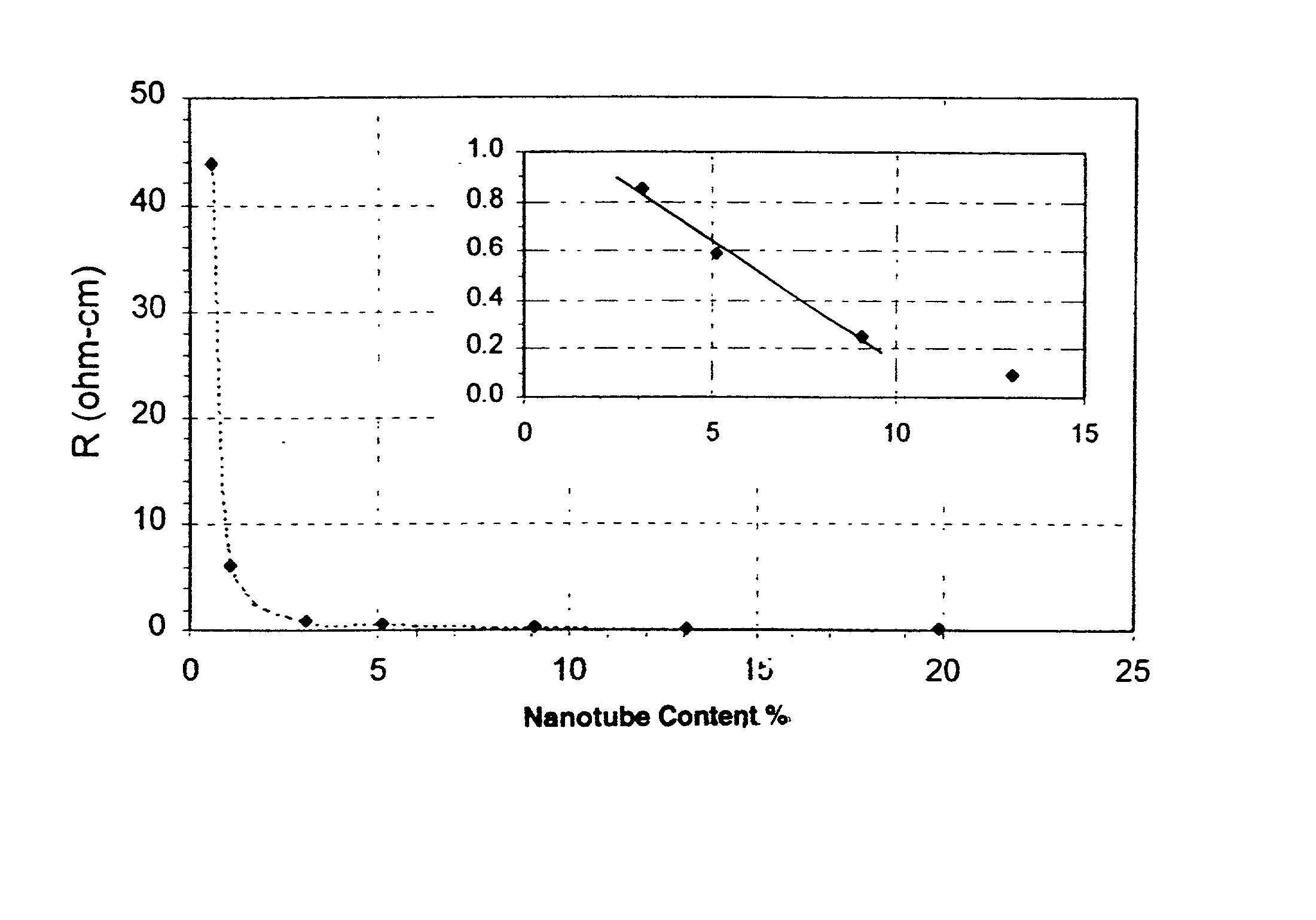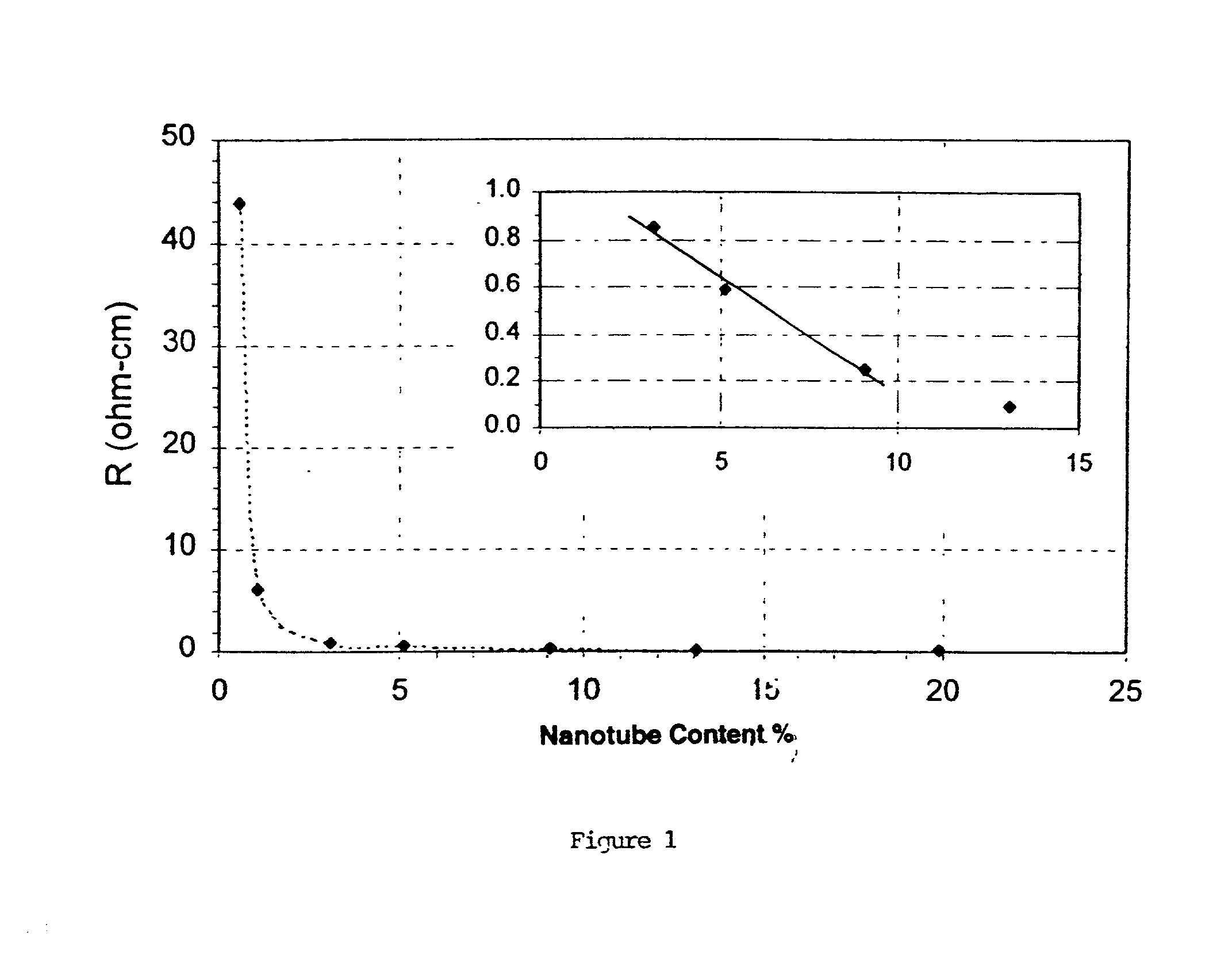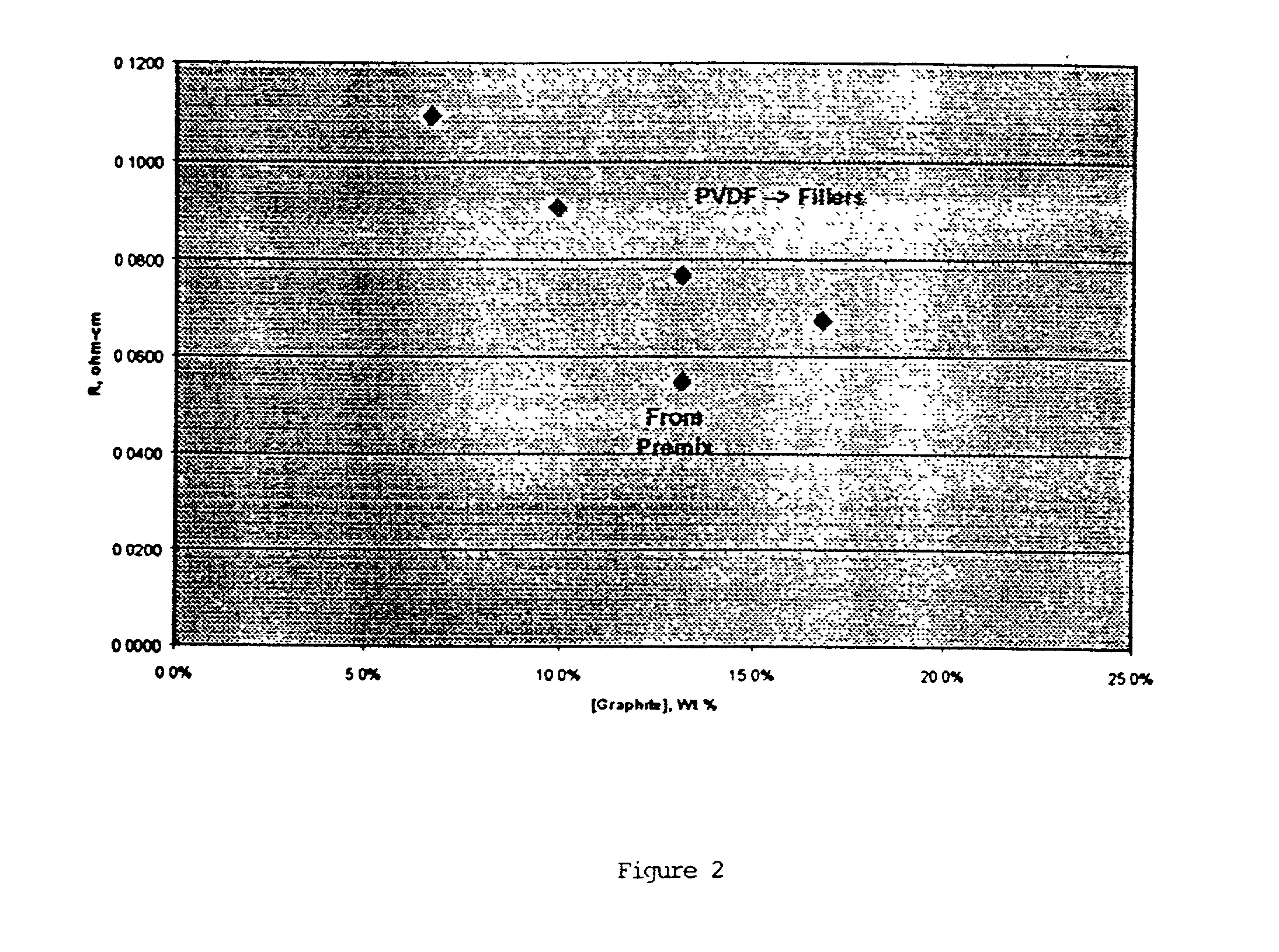Polyvinylidene fluoride composites and methods for preparing same
- Summary
- Abstract
- Description
- Claims
- Application Information
AI Technical Summary
Benefits of technology
Problems solved by technology
Method used
Image
Examples
example i
[0066] A PVDF polymer, Kynar 761, was obtained from Elf Atochem and dissolved in acetone. Hyperion CC carbon nanotubes were added and dispersed into the polymer solution for two to five minutes using a high shear blender (i.e., Waring blender). Water was added to the dispersion to precipitate out the polymer with the nanotubes. The material was filtered and the filtrate was dried in a vacuum oven at 100.degree. C. to remove acetone and water, leaving behind the dry nanotube / PVDF composite. Multiple sheets of the composite with thickness of 0.003-0.01 inches were made using a compression molder. Bulk resistivity of the thin sheet samples was measured using a four probe method. Tensile strength was also measured. Multiple batches with different amounts of carbon nanotubes were tested. The results are reported in Table 1 below:
1TABLE 1 Tensile Batch Nanotubes PVDF Nanotubes Thickness Strength Resistivity # (g) (g) (%) (inch) (psi) (Ohm-cm) 1 .02 10 0.20 -- -- 300,000 2 .09 10 0.89 0.00...
example ii
[0068] Using the procedure of Example I and Kynar 761 PVDF, a comparison was made of the resistivity of composites prepared with Hyperion CC nanotubes and with Hyperion BN nanotubes, respectively. The results are reported in Table 2 below:
2 TABLE 2 CC Nanotubes BN Nanotubes Tensile Tensile Batch Nanotubes Resistivity Strength Resistivity Strength # (%) (ohm-cm) (psi) (ohm-cm) (psi) 1 1 19.17 8145 12987 --2 5 0.4242 6739 4.1081 6663 3 7 0.2825 6770 1.6136 7227 4 11 0.1290 7144 0.4664 7201
[0069] The results of Example II confirm that at low nanotube loadings, PVDF / CC nanotube composites have significantly lower bulk resistivity than PVDF / BN nanotube composites.
example iii
[0070] Example I was repeated, except that an ultrasound sonicator or a homogenizer was used instead of a Waring blender to disperse the nanotubes in the polymer solution. The results are reported below in Table 3:
3TABLE 3 Batch Nanotubes Thickness Dispersion Resistivity # (%) (inch) Method (ohm-cm) 1 1.05 0.0058 Sonicator 11.7122 2 3.03 0.0080 Sonicator 0.6144 3 13.04 0.0130 Sonicator 0.0924 0.0110 Sonicator 0.0959 4 13.04 0.0100 Homogenizer 0.1168 0.0110 Homogenizer 0.1028 5 20.00 0.0090 Homogenizer 0.0381 0.0090 Homogenizer 0.0509
[0071] These results revealed that PVDF composites with low carbon nanotube loadings made with a sonicator generally had lower bulk resistivities than composites which were made with a Waring blender. PVDF composites made with a homogenizer had similar bulk resistivity values to those made with a Waring blender.
PUM
| Property | Measurement | Unit |
|---|---|---|
| Percent by mass | aaaaa | aaaaa |
| Percent by mass | aaaaa | aaaaa |
| Percent by mass | aaaaa | aaaaa |
Abstract
Description
Claims
Application Information
 Login to View More
Login to View More - R&D
- Intellectual Property
- Life Sciences
- Materials
- Tech Scout
- Unparalleled Data Quality
- Higher Quality Content
- 60% Fewer Hallucinations
Browse by: Latest US Patents, China's latest patents, Technical Efficacy Thesaurus, Application Domain, Technology Topic, Popular Technical Reports.
© 2025 PatSnap. All rights reserved.Legal|Privacy policy|Modern Slavery Act Transparency Statement|Sitemap|About US| Contact US: help@patsnap.com



